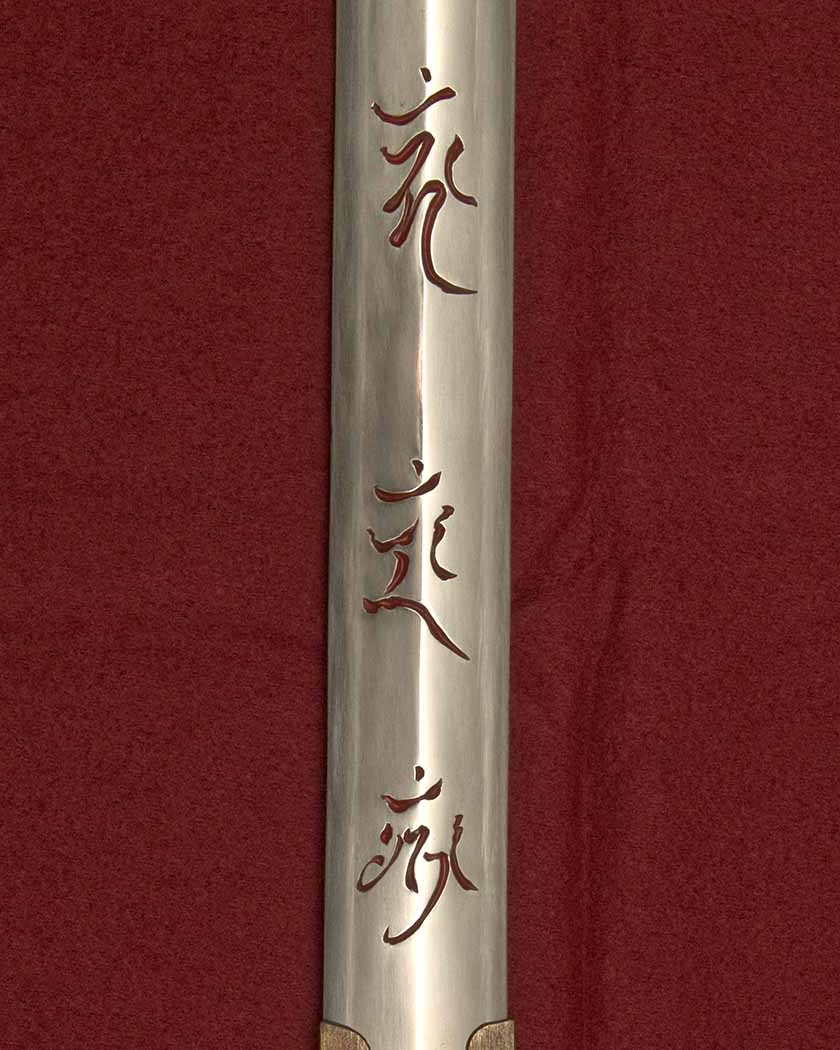|
|
Post by bobbyflo on Feb 10, 2017 13:58:20 GMT
|
|
|
|
Post by Timo Nieminen on Feb 10, 2017 21:06:18 GMT
Apart from the Chinese and bonji characters, there's nothing particularly Chinese or Japanese about this. At first glance, fantasy deriving more from European Medieval swords than anything else. If it's anything in particular, it's the sword of Fudo Myo-o. Fudo Myo-o being an international deity, this doesn't tell you a country. Chinese characters don't tell you it's Chinese, since they can be used to write multiple languages, and are/were traditionally used to write multiple languages. The characters in photo 6 are Chinese characters. The characters in photo 2 (and I think also 3 and the last one) are bonji, a script deriving from Sanskrit, and used in East Asia for Buddhist scriptures. I don't remember seeing any bonji on Chinese swords, but have on Japanese swords and Korean knives. Bonji are the most common characters in horimono (decorative inscriptions/carvings on the blade) on Japanese swords. The first character in 3 is common, and is usually part of a horimono of Fudo Myoo's sword; I think this is the bija ("seed" syllable) for Fudo Myoo. Another blade (Japanese) with the same inscription as photo 3:  visiblemantra.blogspot.com.au/2009/06/sword-with-fudo-bija-and-mystery.html visiblemantra.blogspot.com.au/2009/06/sword-with-fudo-bija-and-mystery.htmlBonji: en.wikipedia.org/wiki/Siddha%E1%B9%83_scriptFudo Myoo: en.wikipedia.org/wiki/AcalaBija: en.wikipedia.org/wiki/B%C4%ABja |
|
|
|
Post by bobbyflo on Feb 10, 2017 23:15:40 GMT
Timo, nice to make your acquaintance and thank you very much for the scholarly input. While I have some very nice swords I can honestly say I don't know much about period forging and decoration methods. It's why I thought joining the Sword forum would be a great place to learn things. You've given me some great info to investigate. Thanks again
|
|
|
|
Post by Timo Nieminen on Feb 11, 2017 3:26:52 GMT
In this case, "period" is modern. Don't know how the blade was made - can't tell from the photos. The acid etching looks rather sloppy (it's possible that it's electro-etching rather than acid, in which case it's still sloppy). Almost certainly Western-made.
|
|
|
|
Post by stopped1 on Feb 13, 2017 7:13:11 GMT
Almost certainly Western-made. Well, the Chinese reads (from top down) "Not/never/no" "die/death" "body" "blade" loosely translated as "immortal body" and "blade"...... reminds me of them Chinese/Japanese tattoos that make no sense because the tattoo artists can't read Chinese but the customers want them..... could also be a chinese forge who would put what ever you want on the blade (ebay swords usually have engraving options for $5-30). But its your sword, if you like it then be happy. |
|
|
|
Post by bobbyflo on Feb 14, 2017 15:13:01 GMT
Thanks folks. I appreciate the feedback/translation etc. I do like it because it's different than anything I've collected before.
|
|

